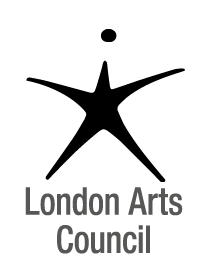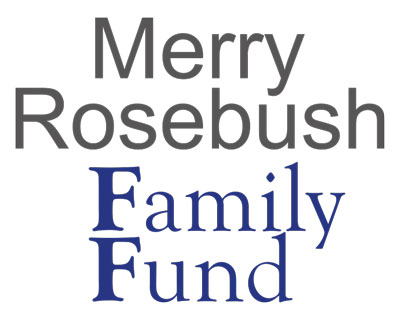MAGISTERRA AT MUSEUM LONDON
“Diversity in Music”
Program Notes
Florence PRICE (1887 – 1953)
Fantasie No.1 in g minor for violin and piano
Florentine Price (Smith) was born in Arkansas to James Smith and her mother Florence Gulliver, who was the first pianist to teach her piano at age four. She would go on to study at the New England Conservatory from 1903-1906, and then to teach for the Music Department at Charter College in Little rock and become head of the Music Department at Clarkson University, Atlanta. She married Thomas Price and had two children in her hometown in Arkansas. Shortly after, the family moved to Chicago in 1927 due to growing racial violence at a time and even after her divorce she found great music and success in Chicago. She began working as an organist for silent film screenings, and composed songs for radio ads to make ends meet after her divorce from Thomas. Even after graduating once again from Chicago Music College in 1934, she would venture out to many secondary institutions, including the Lewis Institute and the University of Chicago. Being a woman of colour, it was difficult for Price to successfully publish her work, so she decidedly put her time into composition, seeing the completion of several hundred pieces.
Thanks to the work of many scholars, such as Rae Linda Brown, and Gancy Jackson, and especially the donations of Price's unpublished works from her daughter Florence Price, helped see that her pieces, and identity as a composer, became solidified and accessible after her death. Her impact on the growing cultural state of Chicago shouldn’t go on noticed, as she was one of the greatest musical influences in her day. Her first symphony was performed by the Chicago Symphony Orchestra in 1933, her other works performed by nine other major orchestras, and some of the great soloists of her day. Price's compositions are known for integrating the rhythms and melodies of African American spirituals, blues, and folk music incorporating the western European tradition.
Fantasie No.1 in g minor was written in 1933, a particularly productive period for Price, resulting in other well-known works like her Piano Sonata, Piano Concerto, and First Symphony. The Fantasie begins with an improvisatory, cadenza-like opening. Throughout the first theme, not too many African American influences can be heard, it is only until the Andante, where these influences appear in a charming and eloquently beautiful B-flat major theme. The ending of the piece combines both styles, the melody derived from the main theme, but the rhythmic language and separated scale integrate African American gestures into the vocabulary of the entire piece. Despite what may seem like sudden transitions, Fantasie is quite symmetrical and structured, the introduction and coda frame a flowing dialogue between each theme, resulting in an innovative yet worldly composition.
Program Notes by Helen Faucher
Margaret BONDS (1913 – 1972)
Troubled Water for cello and piano
American pianist and composer Margaret Allison Bonds was born in Chicago, IL to a physician, writer, and civil rights activist-father and a musician mother. Bonds composed “Troubled Water” as the closing movement of the Spiritual Suite for solo piano in 1947. When she made her recital debut in February, 1952 at Town Hall in New York City, a work titled “Group Dance” (based on the spiritual “Wade in the Water”) closed the program. Its listed title implies that Bonds could’ve had multiple intentions and purposes for this work besides solo performance on the concert stage. The cellist Kermit Moore (1929-2013) was a close friend and musical collaborator; they shared the same concert management for at least two decades. The arrangement Bonds made for cello and piano was done for their concert use, and the version for cello may have been done as early as 1948. An endearing description made sixteen years later appears on a manuscript cello part from Bonds to Moore dated 3 August 1964: “A labor of love for my dear and much-admired friend, Kermit Moore–Sincerely, Margaret Bonds.”
While the cello arrangement is based upon the original work for solo piano, there are numerous places where the technical and expressive “necessities” of the cello create and provide a new and unique wavelength of treatment in the cello voice within the black folk song. Touches of Rachmaninoff and Debussy can be heard throughout the work as seminal influences; Bonds’ deep knowledge of African American sacred and concert music, jazz, and rhythm-and-blues and its blended practice flow between the instruments with profound effect and meaning. This version of “Troubled Water” for cello and piano is dedicated to Ethelda Brown Dudley Harper.
The notes above are excerpted from editor Dr. Timothy Holley, (Associate Professor of Music [Cello] at North Carolina Central University)’s forward to the sole published cello-piano edition of Troubled Water (Classical Vocal Reprints, 2023).
Wynton MARSALIS (b. 1961)
Selections from: Fiddle Dance Suite for violin solo
Trumpeter, Composer, Educator, Wynton Marsalis was born in New Orleans on October 18th, 1961, to parents Ellis Jr. and Dolores Marsalis. From an early age, his father encouraged him to widen his understanding of music, which led to his curiosity and desire to participate in his own cultural community. Oftentimes his father would invite his musician friends to their home, and Marsalis would admire their ongoing conversations of the Civil Rights Act, and the brave figures taking charge to end racial segregation in America. At age six, he was given his first trumpet, leading to his immersion into New Orleans jazz culture and tradition alongside the Fairview Baptist Church Band. After receiving his diploma at the Benjamin D. Franklin High School, Marsalis would begin studying at the Juilliard School of Music in New York City in 1979. Marsalis released his first self-acclaimed record in 1982, also releasing his first classical album in the same year. Throughout his career, Marsalis has composed 607 original songs across various genres. His work in composition always focuses on what new aspects can be added to the jazz ensemble. In classical music, you will find many different cultural influences, opening another world of rhythm and orchestral concepts. In the 1990’s Marsalis would go on to compose many innovative scores with his partnership with the Lincoln Center’s many organizations. Through trying to change the perception of genre, Marsalis also aims to reconnect audiences with previous forms and songs from his African American culture.
The idea behind Fiddle Dance Suite lies in an Afro-Cuban fusion that blends Scottish and Scots-American into a folk-like amalgamation – not to be confused for one of complete randomness, but a specially curated set of five movements to show how differentiating folk styles have overlapped and melded together throughout history, and grow to even greater innovative heights with todays out coming compositions. It is also worth mentioning that Fiddle Dance Suitewas composed as a pair to the Violin Concerto in D, both compositions Marsalis dedicated to Scottish Violinist Nicola Benedetti. From a soft and eerie lullaby, to a foot-stomping Afro-celtic hoedown, “As The Wind Blows” and “Bye Bye Breakdown” serve as a snapshot for the entire suite in this program, but still justifiedly showcase the diverse range of techniques and inspiration taken from many different styles of music. Other cultural influences are explored in the three other movements, such as the traditional Baroque style of hornpipes and reels mixed with ragtime and jazz in“Side Step Reel”, an Afro-Cuban 6/8 bell pattern in the style of an Irish dance in “Jones Jig”, and a bluesy Scottish partita from “Nicola’s Strathspey”.
Program Notes by Helen Faucher
Malcom PARSON
Ole River Blue (2022) for cello and piano
Malcolm Parson is best known for his work as a member of both Turtle Island Quartet and Carolina Chocolate Drops. As a composer, he had his first break in 2019 by collaborating with Brian McOmber on the soundtrack to Little Woods (dir. Nia Dacosta). Since then, his film work has continued with projects such as Good Ol Girl, Ballet After Dark, Laying Flowers.:.Setting Fires, The Sentence of Michael Thompson, If I Go Will They Miss Me, Love Lizzo and currently The Secrets Of Hillsong. As a cellist, he has performed on several featured films including Palmer, A Man Named Scott, Kingdom of Silence, Mudbound, and Blow The Man Down. Recently he was the string arranger for Spencer Zahn and Dawn Richard's"Pigments"and "Pele" by Luedji Luna feat. Mereba. In concert, he has performed with Somi, Kelsey Lue, The Eagles, Dianna Agron, Terence Blanchard, Bela Fleck & Abigail Washburn, Yebba, PJ Morton, BJ The Chicago Kid, Victory Boyd, Paquito D’Rivera, and Cyrus Chestnut to name a few. He has appeared on The David Letterman Show with Rhiannon Giddens, 2018 MTV VMA’s with Shawn Mendes, and The Jimmy Fallon Show with Niall Horan, The Roots, and Salaam Remi. Recently, as a member of Turtle Island Quartet, Parson became Grammy nominated for 2021 Best Instrumental Jazz Album for their work on Terence Blanchard’s album, “Absence” featuring E-Collective and Turtle Island Quartet. Born in New Orleans, he moved to Atlanta at the age of 11 and began studying cello privately through Atlanta Symphony Orchestra’s “Talent Development Program.” He later earned his B.M in Contemporary Writing and Production from Berklee College of Music.
Ole River Blue (2022) for cello and piano was inspired by the great Mississippi River, the third longest river in North America. A single drop of water takes 90 days to travel the entire length (2,340 miles) of this grand river flowing through the inner splendor of North America. This grand river has been the center of enumerable stories, and legends, throughout history. From steamboat settings in Mark Twain’s novels, to poet Langston Hughes’ “I’ve Known Rivers” referencing Abe Lincoln’s trip down to New Orleans, and to the river’s undeniable connection with the rise of Jazz at the turn of the 20th Century. This grand Mississippi River remains yet an iconic presence on the American landscape.
Ole River Blue was commissioned by the Cello Teaching Repertoire Consortium, of which cellist James Waldo is a co-commissioning member. Malcolm Parson—the young composer, and cellist himself—has captured, with this work, expressions of the river’s meandering nature, and subtle qualities of its historic laden spirit.
Program Notes by James Waldo
José WHITE (1836 - 1918)
La Bella Cubana for two violins and piano
Jose White Lafitte was born in Matanzas Cuba to French father Don Carlos Jose, and Afro-Cuban mother Maria Ecolastica Lafitte. He began learning the violin from his father, but soon progressed to Cuban violinist José Miguel Roman and Belgian violinist Pedro José. He gave his first concert at 18 performing themes from Rossi’s William Tell, as well as two of his own compositions. American pianist Louis Morro Gottschalk helped raise the proper funding for José to attend the Paris Conservatory, there he would win the Violin Premier Prix in his first year. After learning of his father’s illness, he returned to Cuba in 1858, only returning to Paris in 1861. From there he became a successful violinist in Paris, playing as a chamber musician, co-founding three chamber ensembles, and giving private lessons. His most famous students are Jaques Thibaud and Georges Enescu. From 1875-1877, he began a tour of South America, Mexico, and the Caribbean. José was a prominent performer, becoming the first ever African solo performer to play with the New York Philharmonic. Jose later settled in Rio de Janeiro to become a court musician for the Brazilian Emperor Pedro II. He briefly resided in Cuba near the end of his life but returned to Paris in 1899 before his death.
La Bella Cubana is categorized as a Habanera, the term being derived from Havana, Cuba. The Habanera is a dance popular to the 19th and 20th century, known for being slow and sensuous, and for its syncopated pattern of quarter and eighth notes. The most famous example of a Habanera is the Aria “Habanera” from Bizet’s Carmen. The history of the Habanera is quite vast, theorized to originate as an English country dance that spread across Europe in the 18th century. The French dance, known as the Contredanse, traveled to Cuba across the Atlantic through either Spanish settlers or French exiles from Saint Domonique (Haiti). Once settled in Cuba, the dance form was mostly reinvigorated by Black musicians on the island, and is believed that the syncopated rhythm with an accented middle bar comes from African-derived forms. Over time, this form developed into Cuban Danzón, and the Argentine Tango. Amongst White’s 32 compositions, La Bella Cubana is arguably his most famous. The piece was originally published for 2 violins and orchestra in 1910, as an homage to the final visit of his homeland in 1875. Since the revival of his composition, many diverse arrangements have come from La Bella Cubana, seemingly the perfect way to celebrate the history and form of the equally diverse and vibrant Habanera.
Program Notes by Helen Faucher
Clara SCHUMANN (1819-1896)
Trio in g minor, op. 17 for piano, violin and cello
In her lifetime, Clara Schumann was better known as a concert pianist, but only today is she becoming more widely recognized as a composer. Clara began piano lessons with her father, Friedrich Wieck, leading to her concertizing from a young age. This later became her main source of income. She met Robert Schumann while he was under the tutelage of her father, the two of them fell in love, and married soon after. They had a special relationship; composing, publishing, and drawing musical inspiration from each other. Despite her great success, audiences would compare and prioritize her husband’s compositions over hers, leaving her to often disguise works under Robert’s name, similarly to Fanny Mendelssohn with her brother. Before Robert’s death, he was admitted to an asylum, leaving Clara to take care of their eight children, putting a halt to her compositions. She had close relationships with several different composers, including the Mendelssohns, Joachim, Chopin, and many more. Her relationship with Brahms was the most complicated, as their friendship grew into something more affectionate once Robert had passed away, but both decided to pursue their individual careers instead.
Clara mostly composed short character pieces and songs, but while pregnant with her fourth child, she had the time to produce a piece of a larger scale. She began writing her Piano Trio in g minor at age twenty-five in 1846. This work is the only four-movement chamber piece she ever composed, making it one of her more prominent works. When it premiered in 1847, just a year before Robert’s Piano Trio in D minor, Clara’s was received more warmly by the public than his. It is said to have supposedly been dedicated to Fanny Mendelssohn, who unfortunately died before its publication. The trio showcases a clear understanding of sonata form in the first movement, with an intricate soft opening leading to a hefty main theme. The Scherzo, a rustic movement with a zingy dotted theme from the violin, all while remaining playful yet gentle in character. Followed by a lyrical andante with a fierce contrasting section, and an effective and dramatic use of counterpoint in the finale. The Romantic era expanded on the form of the piano trio through its length and harmonic textures, and it is no doubt that Clara’s trio developed through her mastery of counterpoint and long, melodic phrases.
Program Notes by Helen Faucher












